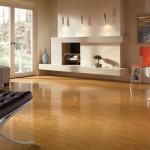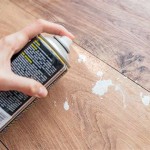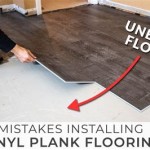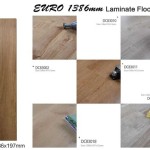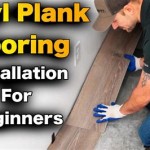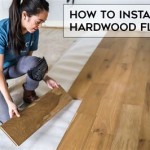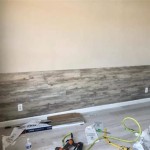How Do You Fix Buckled Wood Floors?
Buckling wood floors are a homeowner's nightmare. This unsightly and often disruptive problem signifies underlying issues that require prompt attention. Buckling occurs when wooden planks lift, separate, or warp from the subfloor, creating an uneven and unstable surface. Understanding the causes and implementing the correct repair methods are crucial to restoring the floor's integrity and aesthetics.
Diagnosing the Cause of Buckling
Before attempting any repairs, identifying the root cause is essential for effective and long-term solutions. Several factors can contribute to wood floor buckling, and pinpointing the specific culprit will guide the repair strategy. Moisture is the most common culprit, whether from flooding, leaks, or excessive humidity. Improper installation, including insufficient expansion gaps or inadequate subfloor preparation, can also lead to buckling. Additionally, structural issues within the home, such as foundation problems, can cause the subfloor to shift and the wood flooring to buckle.
Minor Buckling Repairs: Sanding and Refinishing
For minor buckling where the planks have lifted slightly but remain largely intact, sanding and refinishing can often rectify the issue. This process involves sanding down the raised areas to create a level surface, followed by applying a new layer of finish to restore the floor's appearance. This method is most effective when the buckling is localized and hasn't caused significant damage to the wood. It's crucial to ensure the moisture source causing the buckling has been addressed before sanding and refinishing, or the problem will likely recur.
Moderate Buckling Repairs: Replacing Affected Planks
When buckling is more pronounced, involving significant warping or separation between planks, replacing the affected sections is often necessary. This involves carefully removing the damaged planks and installing new ones that match the existing flooring. Ensuring the replacement planks are properly acclimated to the environment's humidity levels is vital to prevent future buckling. This repair method requires more skill and tools than sanding and refinishing, but offers a more durable solution for moderate buckling issues.
Severe Buckling Repairs: Addressing Subfloor and Moisture Issues
Severe buckling often signifies underlying problems with the subfloor or persistent moisture intrusion. In such cases, simply replacing the buckled planks will not suffice. The subfloor may need to be repaired or replaced entirely, depending on the extent of the damage. Furthermore, addressing the source of the moisture is paramount. This might involve fixing leaks, improving ventilation, or installing a moisture barrier. These repairs are more complex and often require professional assistance to ensure the structural integrity of the floor and prevent future buckling.
Preventing Future Buckling: Moisture Control and Proper Installation
Preventing buckling is far more effective than dealing with its consequences. Implementing preventative measures can significantly reduce the risk of future issues. Controlling indoor humidity levels through proper ventilation and the use of dehumidifiers is essential, especially in areas prone to moisture, such as basements and bathrooms. Ensuring proper installation techniques, including leaving adequate expansion gaps around the perimeter of the room and using a suitable moisture barrier under the flooring, are also crucial for preventing buckling. Regular inspections and maintenance can help identify and address potential problems early on, preventing them from escalating into major repairs.
Choosing the Right Repair Method
Selecting the appropriate repair method depends on the severity of the buckling and the underlying cause. For minor buckling, sanding and refinishing might suffice. Moderate cases may require replacing affected planks. Severe buckling often necessitates addressing subfloor issues and moisture sources. Accurately assessing the situation and choosing the right approach is crucial for effective and long-lasting repairs. Consulting with a qualified flooring professional can provide valuable guidance and ensure the chosen method aligns with the specific circumstances.
Tools and Materials for Wood Floor Repair
The necessary tools and materials for wood floor repair vary depending on the chosen method. Sanding and refinishing require sanding equipment, sandpaper, and finishing products. Replacing planks necessitates tools for removing and installing wood flooring, such as pry bars, hammers, and saws. Addressing subfloor and moisture issues might involve more specialized tools and materials, like moisture meters, vapor barriers, and subfloor repair products. Having the right tools and materials on hand will streamline the repair process and contribute to a successful outcome.
When to Consult a Professional
While some minor buckling repairs can be tackled by experienced DIYers, more complex situations often benefit from professional expertise. If the buckling is widespread, involves significant subfloor damage, or if the moisture source is unclear, consulting a qualified flooring contractor is recommended. Professionals possess the knowledge, experience, and specialized tools to accurately diagnose the problem, implement effective repairs, and prevent future buckling occurrences. Their expertise can save time, money, and frustration in the long run, ensuring a durable and aesthetically pleasing floor.

Buckled Hardwood Floors Job Ysis Why Fixes

How To Repair Buckled Hardwood Floors Bona Com

How To Repair Buckled Hardwood Floor Top 6 Easy Steps

Water Damaged Buckled Hardwood Floor Repair Hudson Group

Buckled Wood Floors Causes And Fixes Usvintagewood Com

Buckling Floors Now What News And Events For Midsouth Crawl Space Solutions

Hardwood Floor Problems Buckling Floors Series 3 Of 6

Avoid Cupping And Buckling In Hardwood Floors Twenty Oak

Buckling Floor Solutions

What Is Peaking Buckling And Cupping In Wood Floors Builddirect
See Also
